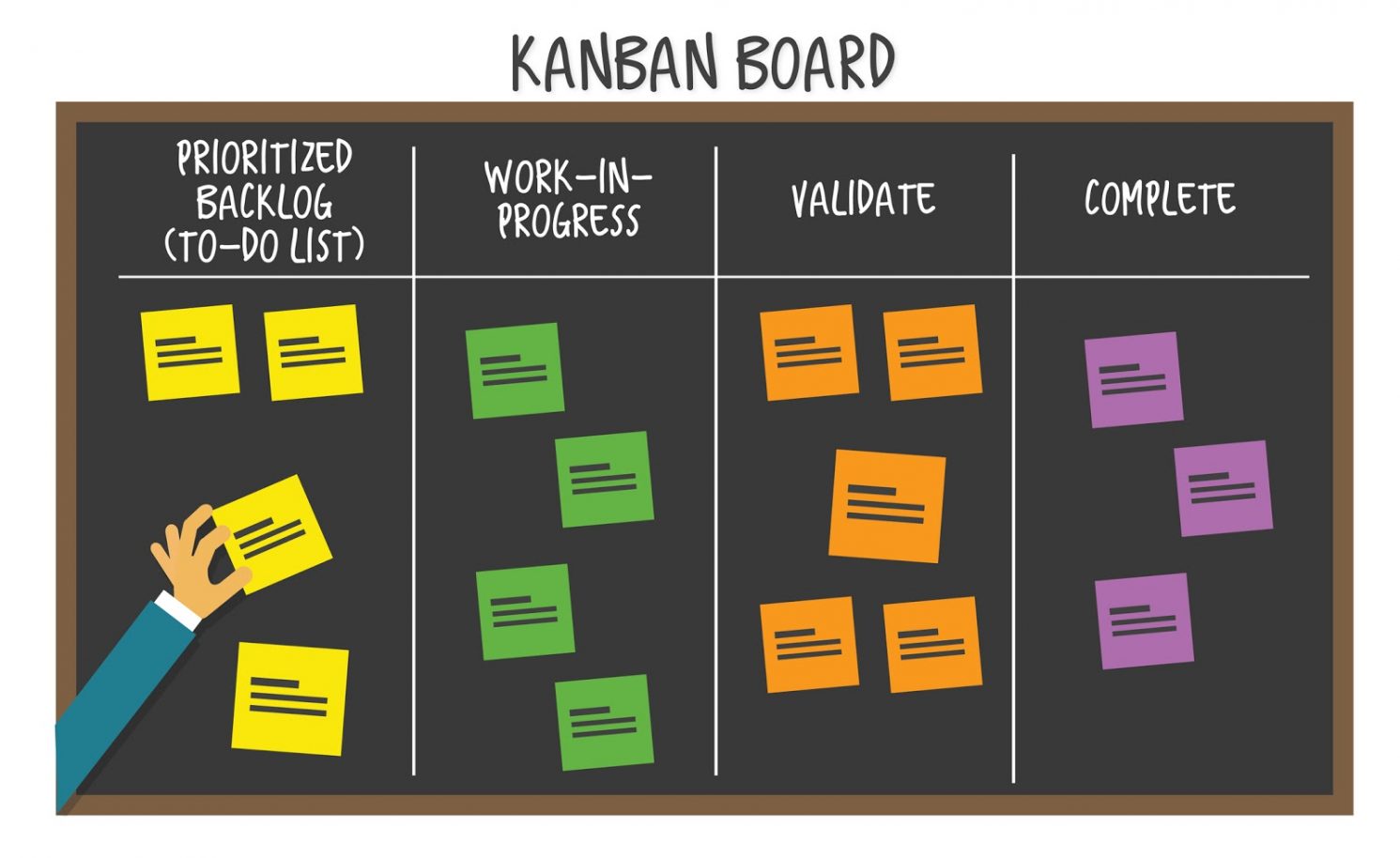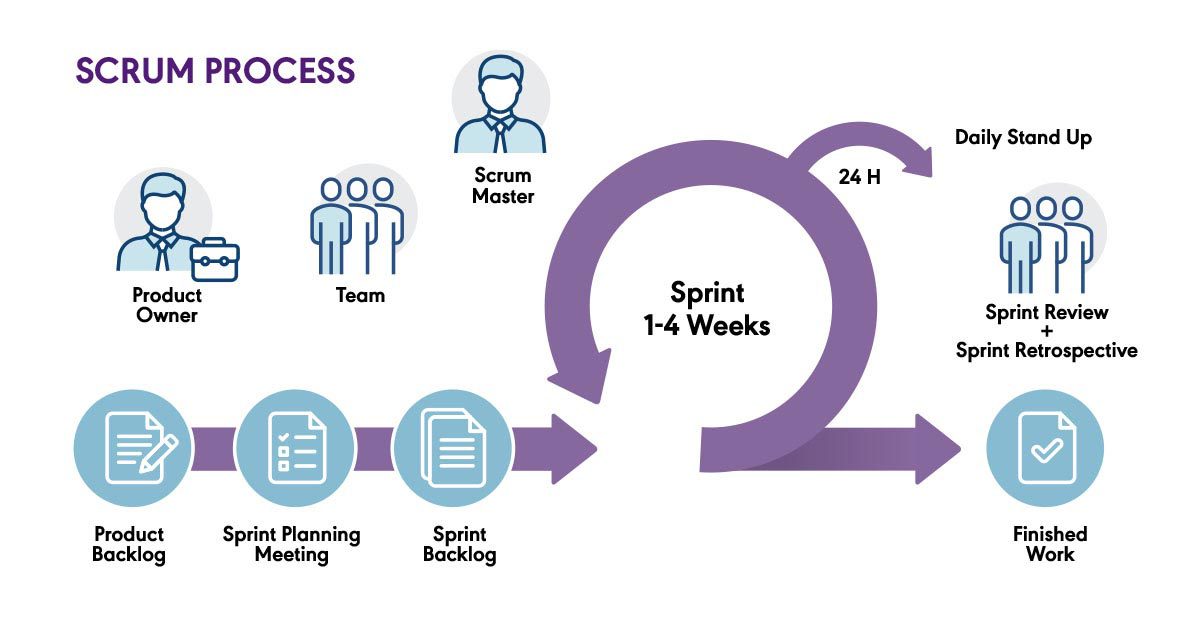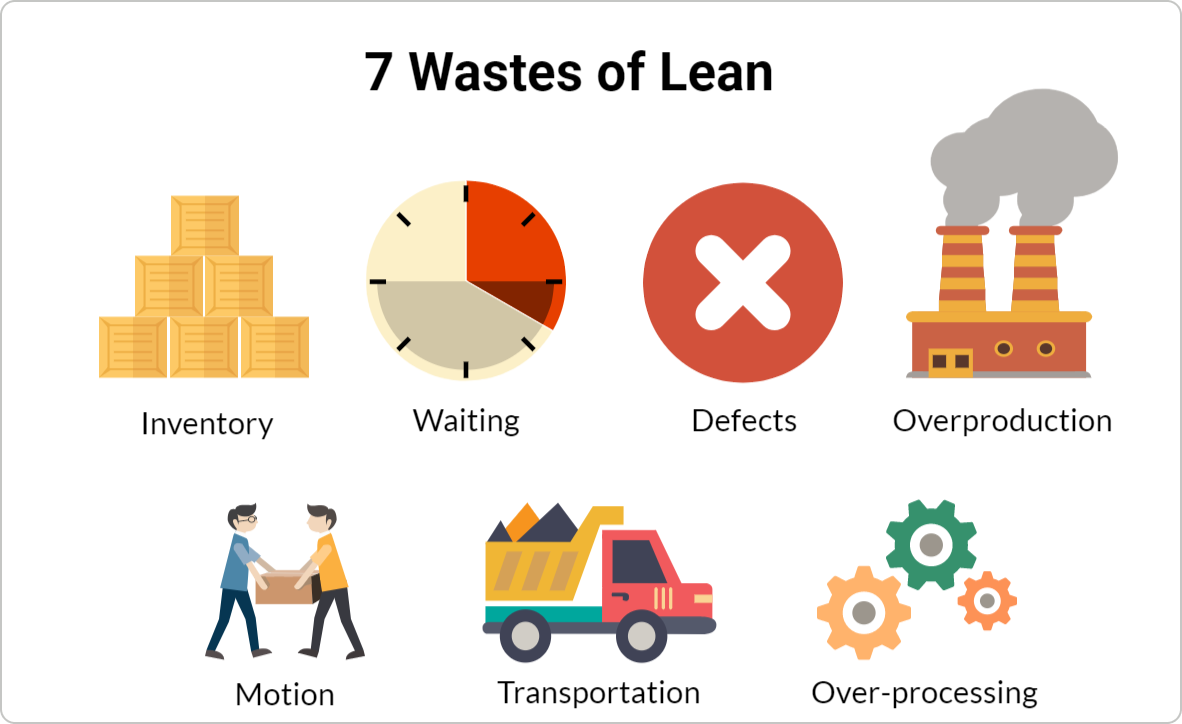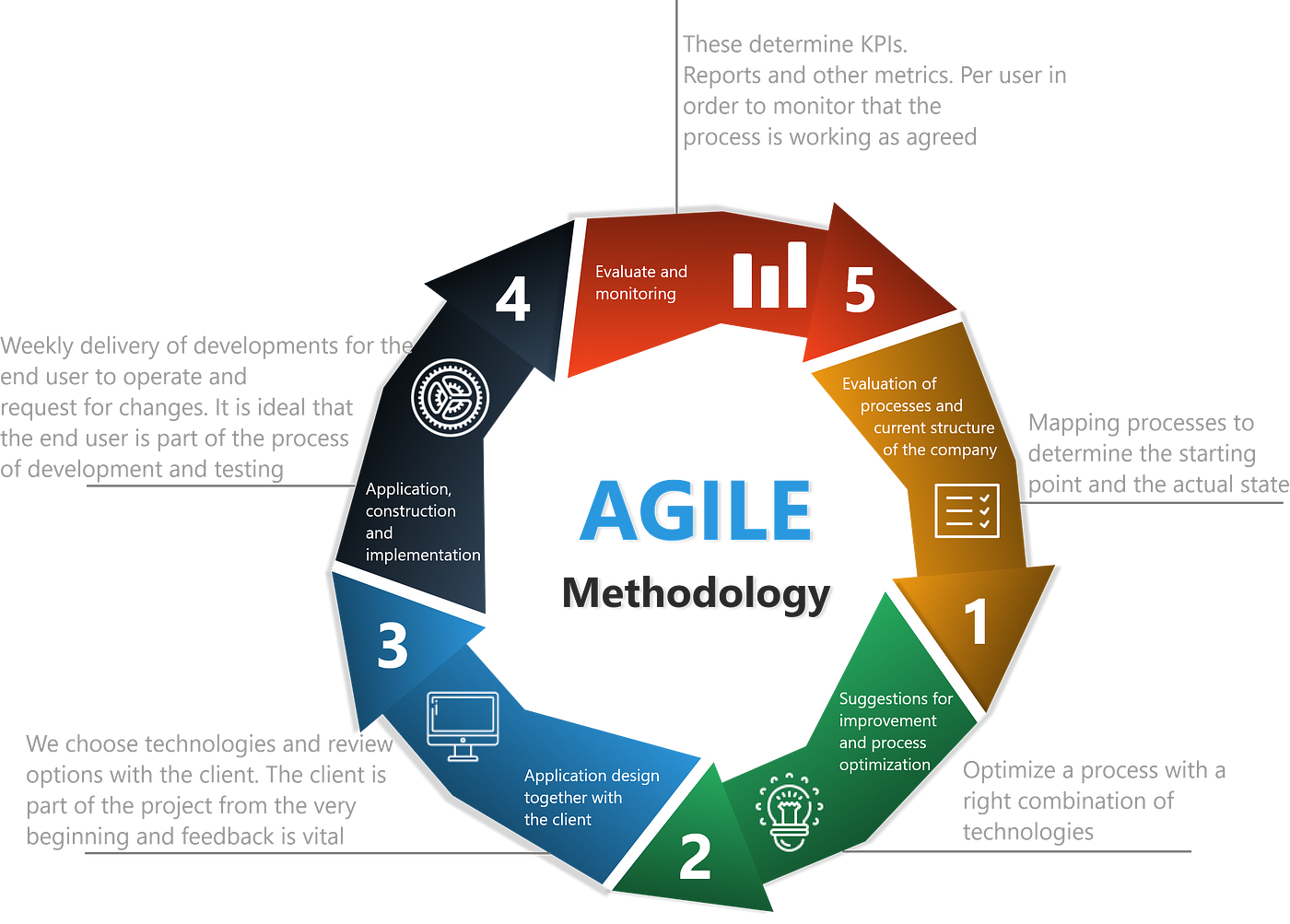February 16, 2023
 by Grace Pinegar / February 16, 2023
by Grace Pinegar / February 16, 2023

A successful recipe never deceives. Likewise, a successful project management methodology never fails.
A whiff of aromatic spices enters your room. Mesmerized, you follow the aroma, which leads you into the kitchen of your house.
Your mother is cooking up an aubergine curry. You plead with her to let you taste some. As you do, the blissful taste takes you to the seventh heaven.
What met your eyes was a finished curry. But what you didn't see is the effort. From washing the aubergines to cleaning them to cooking them on an open fire, the curry was a concoction of several processes. Pretty much like a project, which needs an apt project management methodology.
In the business scenario, project management methodology is an evaluation of a company's financial and team skillset. It contains a site plan, project brief, front runners on a project, and back-end synchronization of the involved teams. Software projects differ from financial or HR projects, but the end goal is the same; profit.
Over time, project managers have developed a plethora of methodologies for how they orchestrate and control their projects, with the inclusion of project management software.
A project management methodology is a charted-out roadmap that leads to the successful execution of a project. It contains tools, software, guidelines, and resources that project managers require to plan, manage and monitor deliverables successfully.
Perhaps unsurprisingly, the list of possible methodologies grows constantly as innovative leaders think of new ways to conduct their projects efficiently. It can feel overwhelming just looking at a list of these methodologies, wondering which will lead your team to project success.
The first step is to pan out your project requirements. Analyze your team bandwidth, resources, software requirements, time, and labor. All these requirements fit snugly into a project management framework.
The project framework consists of important steps, guidelines, and policies that shape the course of your project. It draws a fine line between each individual process so that no two processes overlap with each other. Each team member within the project team is assigned a task by the project manager, which they need to complete within the deadline.
It can be grouped into six major steps.
Once you have prepared a comprehensive plan, it is time to figure out which project management method will help you hit these targets sooner.
Every list you’ll find on the internet regarding project management methodology types will vary. That’s because this term is fairly fluid, and everyone’s definition of “methodology” is different.
In this article, I’ve compiled 13 of what I believe are the most commonly used methodology types in the hopes that you can find something that works well for your team.
Kanban falls under the lean project management umbrella and is most closely compared to the scrum methodology. Kanban focuses on maintaining strict processes so as to make the project go smoothly.
Kanban requires real-time communication through something called a Kanban board, a project management scheduling tool that makes work transparent between departments. Kanban board resembles a pinboard, where you can pin your queued, in progress, validated, and completed tasks chronologically. Kanban is Japanese for “visual signal,” which makes sense as you understand how necessary the vision board is to the methodology.
 Source: talentvis.com
Source: talentvis.com
Kanban is most typically used to implement agile software development, as well as in lean manufacturing projects like just-in-time. As you can see from the image above, a kanban board consists of visual signals, columns, commitment points, delivery points, and work-in-progress limits.
Some professionals swear by kanban boards, while others aren’t so keen. Kanban is a great methodology for teams looking to reduce the amount of time it takes to get a project from start to finish. Kanban is also a good fit for production support.
Kanban is generally used to indicate supply replenishment levels. It can visually represent your project supply requirements, work in progress, and completed tasks. You can get "at a glance" updates, shift focus from completed to WIP tasks and schedule necessary supervision runs. If you function on a constant "pull" basis without any downtime or overstocking, kanban is for you.
Scrum is a popular project management methodology and is a feature of the agile method. Therefore, it is not a standalone methodology. “Scrum” is originally a rugby term. That’s right; even project managers use sports analogies. Scrum is a rugby play in which teammates lock arms with their heads down and push against the opposition together.
The project management definition varies. The scrum framework, in a professional setting, focuses on teamwork, personal accountability, and group progress toward the same objectives.
Scrum has three pillars: transparency, inspection, and adaptation. Teams who choose scrum operate their projects in two-week or month-long increments referred to as “sprints.” With a focus on accomplishing short projects constantly, the scrum methodology makes large, multi-faceted projects feel easier to accomplish.

Within the scrum methodology, teams manage themselves. The team divides the work between project members, the scrum master, and the product owner and projects a rough timeline or sprint. Bountiful project overruns, monitoring, and final checks are all completed within that sprint. The deadline and workload are always clearly communicated, allowing employees to divide responsibilities as needed.
One important aspect of the scrum methodology is the daily morning standup meetings wherein team members deliver updates on progress, blockers, or ideas. They also discuss the day's ad hoc tasks, which need adherence and focus. With such teamwide transparency, a project manager is not needed 24/7, leaving managers to control project direction and focus.
Scrum is a fast-paced methodology that works best within flexible teams who can quickly adjust. This is true not only of the project but also within the company as a whole.
Scrum is best for teams with experienced managers who are skilled in prioritization. This methodology works well for independent leaders who can navigate their projects without hand-holding.
Because of its swift deadlines and narrowed focus, scrum is not ideal for larger teams that have to manage a multitude of employees. It is, however, an effective methodology for organizations with smaller, more focused groups who are ready and willing to take on larger projects.
You can use scrum if you strive for continuous improvement within your teams. With a consistent streak of task delivery, one gets better at the skill. Be it design, content creation, or email marketing, scrum makes you an expert at your job. Switching to scrum as effective means of project management can help you get more done in less time.
Let's look at seven famous types of scrum certifications you can complete to become a scrum master and lead high-end projects.
Scrumban is, as you may be able to tell, a combination of the scrum and kanban methodologies.
Why would you want to combine two separate methodologies, you ask? Project management is all about finding what works for you and your team. If you get there by taking the best features of two varying methods, so be it.
-png-1.png?width=600&height=300&name=Copy%20of%20Process%20(5)-png-1.png)
Scrumban is being used more and more within the service industry, which has to focus on both upkeep and production. Scrumban takes hints from the scrum methodology so as to remain agile and flexible. It combines that agility with the continual improvement philosophy from kanban in order to create the scrumban method.
Scrumban is a good idea for maintenance-type projects and teams that work in sprints to develop new products or services. As new product sprints don't have fixed timelines, scrumban's flexibility and agility would give your product teams a relaxed atmosphere.
This methodology is driven by an algorithm that determines a project’s schedule and activities. Project administrators who utilize CPM are required to understand the activities that a project needs to accomplish, the time allowed for each task or activity within the work structure, project deliverables, and dependencies.
Once you have a grasp on the variables, you can use estimated durations for each task, plus any dependencies, to help structure the project. This extrapolates a project’s overall timeline and delegates tasks more efficiently. CPM allows you to determine what can be completed in tandem and which tasks depend on prior steps’ completion. The critical path method installs one particular service at a given timeframe while assigning other services a fixed turnaround.
Source: workamajig.com
Organizations waste a lot less time when they provide detailed project schedules. CPM is, unfortunately, not a great choice for beginners. It necessitates the experience of those who have been around the block. If you’re leading a project for the first time, this is not the right methodology.
CPM is a good methodology for projects with interconnected responsibilities. One good example would be residential construction. It’s impossible to put carpet in a home while you’re still laying the foundation. However, team members can take to working on other aspects of home building, such as cutting wood or creating more insulation.
The critical path method can be used when important product updates are at stake. If you are stuck with necessary approvals on projects, you can use CPM to schedule your tasks in accordance with tentative dates. This project management method takes into account the criticality of the problem and provides a relevant solution.
Critical chain project management does not go as far back as many of the other methodologies. Rather, it was developed more recently as an alternative for those who weren’t getting their money’s worth with the critical path method (CPM).
In this methodology, you work backward to go forward. Essentially, you take your deliverables — or the items you want this project to produce — and use those to create a detailed and accurate project schedule.
In critical chain project management, planning revolves around resources or the people and equipment you have available to carry out tasks. This methodology takes stock of task order and deadlines but doesn’t use those parameters as its driving force. CCPM is a relatively newer methodology that asserts a focus on the sustainability of resources.
Administrators are responsible for analyzing a project’s deliverables and working backward to find out which resources are necessary for a job’s completion. CCPM is an effective way for companies with limited resources to accomplish their goals. CCPM has been known to help organizations scale projects faster and without spending as much working capital.
In CCPM, the focus is placed on mono-tasking or allocating energy to one task at a time. This is the opposite of multitasking, which requires people to split focus between varying project components. Studies have proven that multitasking is an inefficient way to get things done, as it’s impossible to devote your attention to separate things at the same time.
CCPM would be a fitting methodology for a company trying to roll out a live-chat solution. Such a project requires one team’s full attention as they work to deploy a new tactic. It is difficult to enact CCPM across departments and teams because there will always be conflicting priorities.
Critical chain project management prioritizes task handling among teams to get more done in less time. It doesn't let you divert your focus from the project. For companies looking for greater efficiency and accuracy, this is the right choice.
Lean project management is all about maximizing value and minimizing waste. Every business, everywhere, hopes to increase profits and decrease the number of resources spent to produce its goods and/or services.

Source: kanbanize
Lean management can help you do this with its five principles. These principles aim to help companies reduce costs, improve the quality of their goods and services, and increase consumer happiness. Whether that’s happiness with the product or happiness in life, I’ll let you decide.
The lean methodology’s five principles are as follows:
This methodology is a great option for companies that have limited resources or wish to reduce their resource usage. Lean management enables organizations to reduce costs without reducing quality.
Lean management can help you reduce factory waste and maximize shelf production. This technique has unwrapped newer ways of efficient production. It boosts workers' motivation as they do not have to rake in long hours dealing with heavy-handed machinery. The technique is now being adopted into software as a service (SaaS) business applications to manage communication and vendor outsourcing.
Extreme programming (XP) is an agile approach to software development. Its main goal is to improve software quality while also improving the lives of those who are working on the projects, i.e., the developers. This is what the process looks like:

Source: dataMiner dojo
According to Don Wells, extreme programming should be used in times of:
XP has five core values: communication, courage, feedback, respect, and simplicity. These core values keep the ship running tight and prioritize the treatment of team members in pursuit of achieving goals.
XP is conducted through varying practices, which Ron Jeffries originally outlined. The practices of XP continue to value a team effort and care for the individual.
If you want to give your software teams a respite from constant product iterations, you can use this methodology. Extreme programming can weather harsh conditions, like changes in system configuration or functionality. It can shift your product as per consumer requirements and let you heave a sigh of relief. Extreme programming lessens the aftermath of project runs and mitigates data risks.
The waterfall methodology is one of the oldest tricks in the book. This method of project management was developed in the 1970s and is still being used today, more widely in the software and engineering industries.
The waterfall strategy consists of creating a sequential order of stages or steps to proceed. Those leading a waterfall project should have the stages and steps they intend to follow laid out beforehand. Project managers and team leaders are required to have a clear understanding of the project design from the beginning.
This strategy is not flexible to change and should not be used for projects with an extensive timeline. The stages used will vary depending on your team structure and preferred workflow, but they can look something like this:

Source: Instagantt
Have you ever made plans to train for a marathon? Plan a wedding? Buy a new house? Then you may have used this method without even knowing it.
The waterfall method can be used in any such situation. It’s simply the process of listing deliverables and completing them sequentially.
If you’re working with a project team, some tasks might be delegated to other employees. Each step in the waterfall method is completed before you continue to the next, which provides enough time to check the results and ensure everything is done correctly.
This method does not allow for doubling back and redoing previous steps. It requires you to get the right things done at the right time, making it a risky choice for projects riddled with uncertainty. You will want to take this into account when deciding if the waterfall method is right for you and your team.
As the waterfall model meanders only forward and not backward, you can use it for projects that have fixed requirements, time, cost, and resources. The waterfall methodology doesn't give you a second chance to go back and re-adjust your project parameters. Each step in the project management framework should be approved and finished before hopping to the next one.
If something is agile, it is able to move quickly and easily. If you have a rapidly developing strategy and employees who need to be able to keep up, your project management methodology should be agile too.
The agile structure is more cyclical, as opposed to other methodologies, which are more linear. It is the opposite of the waterfall method and instead puts a focus on continuous improvement.
The order of things in the agile method can look something like this:
Plan - Design - Create - Test - Analyze - Launch - Plan
Like any project, you begin with an idea. Then you implement that idea and make changes and improvements in real-time. The agile methodology is quite flexible, giving employees space to collaborate and create better solutions.
For example, VistaPrint, a photostat company, recently turned agile from the traditional waterfall model. The main incentive was the slowdown of the product development lifecycle. Researchers found that it took almost 2 months for a product to move from the ideation stage to the implementation stage, which was alarming. As the waterfall model doesn't look back once started, no one counted the amount of work and days consumed!
Agile methodology eliminated long creative lead times and unclear decision-making. It decreased peer feedback times, optimized business processes, and introduced daily standups with Kanban flashcards. These newfound practices helped them to come down to 15 days from 60 days!

Source: Medium
One challenge with the agile methodology is that everything is an educated guess. Your deadlines aren’t hard and fast, and neither is your budget. As time goes on, you may need to rewire some strategies, change due dates, or even ask your stakeholders for additional resources.
This methodology may not be a good choice for those operating with fixed resources and bandwidth, like creative teams.
This strategy requires constant communication, so project managers are able to fix what’s gone wrong. If you’re on a team that utilizes agile, you are also responsible for speaking up when processes aren’t working or could be better. Agile systems run on lean production and inventory, so you need to do away with stagnant components or practices.
A hybrid methodology refers to a combination of waterfall and agile. This strategy consists of front-loading a lot of the work. There is a heavy analysis and a focus on discovering the problem.
Source: ZenTao
Once the problem is registered, hybrid develops into an agile workflow. Some professionals refer to the hybrid approach as “structured agile.”
Hybrid requires teams to take their time before jumping into a project. This allows teams to remain coherent with project needs in the first leg of the project management framework but flexible in later project stages.
Hybrid projects are structured while remaining flexible. The project’s problems may be mapped out in advance, but helpful iterations can be continually added on. This keeps teams from having to restart projects completely to make a few changes.
To some, this strategy can feel like a compromise. It’s neither completely structured nor completely freeform. This approach is a good choice for teams that generally know what they want but aren’t 100 percent sure how to get there.
This approach is a good choice for teams that generally know what they want but aren’t 100 percent sure how to get there. This approach is also effective for teams with a clear budget in place and can iterate without going off the deep end.
PRiSM is an acronym that stands for Projects integrating Sustainable Methods. The PRiSM approach uniquely focuses on how a project can and will affect the environment. Originally developed by Green Project Management (GPM), this methodology has achieved awards for its green focus and overall resource maximization.
The PRiSM strategy challenges people not just to consider the project life cycle, but also to think about the after-effects. The PRiSM methodology is more commonly used in communities that prioritize environmental protection and green computing.

Source: Green project management
This doesn’t mean that all PRiSM projects are centered on environmental preservation. PRiSM can be used in any project. However, it certainly is popular within organizations that generally prioritize sustainability efforts.
What kinds of industries, then, might utilize PRiSM? Is there one type of organization that should consider the environment when drafting its project plan? Or should this be a more universal practice?
Oil and gas are just two industries that could make a huge difference by considering long-term environmental effects in their project charters. Any company that requires deforestation should also consider the PRiSM methodology. Examples of these are real estate companies, construction industries, and manufacturing companies.
If your business strives for a greener future, PRiSM should be your curtain call. PRiSM derives utility from every potential angle of your product lifecycle and strategizes sustainable outcomes. It abides by socio-economic and environmental welfare practices. It ensures a promise that one day, the world will be a greener, healthier, and less smoky place.
PRINCE2 is an acronym for Projects in Controlled Environments. (Project management has a LOT of terms —acronyms are necessary!) This methodology was, funnily enough, developed for and used most often by government officials in the UK. It is now more widely distributed and has spread to other European countries, as well as Australia.
PRINCE2 requires users to divide projects up into smaller, more approachable stages. This is the standard methodology for information systems projects in the U.K. PRINCE2 is a structured methodology with seven principles that are consistent across any organization.
The seven principles of PRINCE2 are:
1. Continued business justification: Is the project continually viable?
2. Manage by exception: Communication is utilized when necessary (i.e., when a problem arises).
3. Learn from experience: Team members maintain a consistent lessons log throughout the project. Project team members should refer to the current and previous lessons logs to speed up processes.
4. Defined roles and responsibilities: Individuals may take on many roles. The four levels of roles are corporate or program management, project board, project manager level, and team level.
5. Manage by stages: The PRINCE2 plan is controlled one stage at a time. Before they can transition into a new stage, team members must document new risks, the overall plan, or any updates to the next stage concerning recent discoveries.
6. Focus on products: Focus on what a project has to deliver or its deliverables as defined by executives and/or consumers. Everyone working on the project should be making moves toward one desired outcome.
7. Tailor to suit the project environment: This methodology should be tweaked according to its environment. In other words, continue to operate according to your normal structures.
Like the waterfall method, PRINCE2 does not accommodate change as easily as other methods. Any change made in the middle of the project requires a redo of almost all documentation. As a document-heavy methodology, this could add up to hours of work. Project managers should consider this before choosing the PRINCE2 method.
This method is primarily suited for government projects in the U.K., considering that is its intended purpose. However, it can also be a useful method for projects with pre-sorted requirements. Again, with so much necessary documentation, PRINCE2 is not something you’ll want to get into as you go.
In integrated project management, companies fully standardize their project management strategies. This is an especially relevant strategy in creative industries so as to structure the development of various collaterals.
This strategy makes way for clarity across the board by having employees across departments follow the same structure. It simplifies progress communication, as all teams operate on a similar agenda.
IPM might be a good strategy to choose if your organization plans to publish content across various platforms and devices. The “integrated” aspect means all parts of the process work together to make each other more effective. You can plan your go-to-market strategy and align it with IPM. All your videos, promotional teasers, trailers, ebooks, and other collaterals can be centralized in one GTM sheet that every team member can access.
Nothing sounds better than having a set system for project errands. Project management methodology is a soft tool that standardizes, structures and organizes your work queues. This recollects your focus in one single direction and keeps things moving down the funnel without external stoppage.
When you're deploying any of these methodologies, lean into their work mechanism. There can be infinite successful outcomes if you work closely with your peers, adhere to your methodology, and work diligently. Following this practice would reap numerous benefits. You can
Things seem on the up and up, there is no going up before going down
While project management removes the albatross around your neck, it does come with a few challenges.
1. Conflict of interest: Not everyone would be on board with the project management methodology.
2. Goal setting: Failure to distinguish goals can result in a host of problems, including vendor mismanagement and poor resource allocation.
3. Scope creeps: Clients may request unexpected changes at later stages changes, resulting in scope creep. You can handle this by either asking for a fund increase or a time extension.
4. Budget restrictions: If you initialize your project with a fixed budget, chances are you might readjust it later. It all depends on what resources you need to bring in and the approvals you need to take. The budget is directly proportional to the return on investment (ROI). So the more you invest, the higher could be promised.
5. Lack of communication: Lack of communication might overshadow your employee's working ability. If the employees don't interact, they won't know what the other is working on, resulting in less efficiency and missed deadlines.
6. Team conflict: If things got sour between project stakeholders, the whole project would face the music of failure. Constant vendetta can put each team's efforts at risk and sabotage the entire organization.
7. Team performance: If the leader doesn't track team performance, he won't know who is looking after what. A foggy mindset would neither empower employees to do better nor churn any profits in the long run.
Phew - that was a lot of information. Hopefully, you understand your options and are a few steps closer to choosing the methodology that is right for you.
The best part? You don’t have to stick with one of these after deciding. If you try it out for a while, only to realize it’s not fit, you can go back to the drawing board. Just try not to do that too many times, as you’ll end up depleting vital resources, patience being one of them!
Wondering whether a project is right for you right now? Learn how to conduct a feasibility study to save you time and money in the long run.
This article was originally published in 2019. The content has been updated with new information.
Grace Pinegar is a lifelong storyteller with an extensive background in various forms such as acting, journalism, improv, research, and content marketing. She was raised in Texas, educated in Missouri, worked in Chicago, and is now a proud New Yorker. (she/her/hers)
No matter your industry, there’s likely a whole list of acronyms and jargon that relates to...
 by Holly Landis
by Holly Landis
A major ordeal with unfinished tasks is the overall delay in completion and the loss of...
 by Sandeep Kashyap
by Sandeep Kashyap
Starting a new project is always exciting. But before anyone can roll up their sleeves and get...
 by Holly Landis
by Holly Landis
No matter your industry, there’s likely a whole list of acronyms and jargon that relates to...
 by Holly Landis
by Holly Landis
A major ordeal with unfinished tasks is the overall delay in completion and the loss of...
 by Sandeep Kashyap
by Sandeep Kashyap


